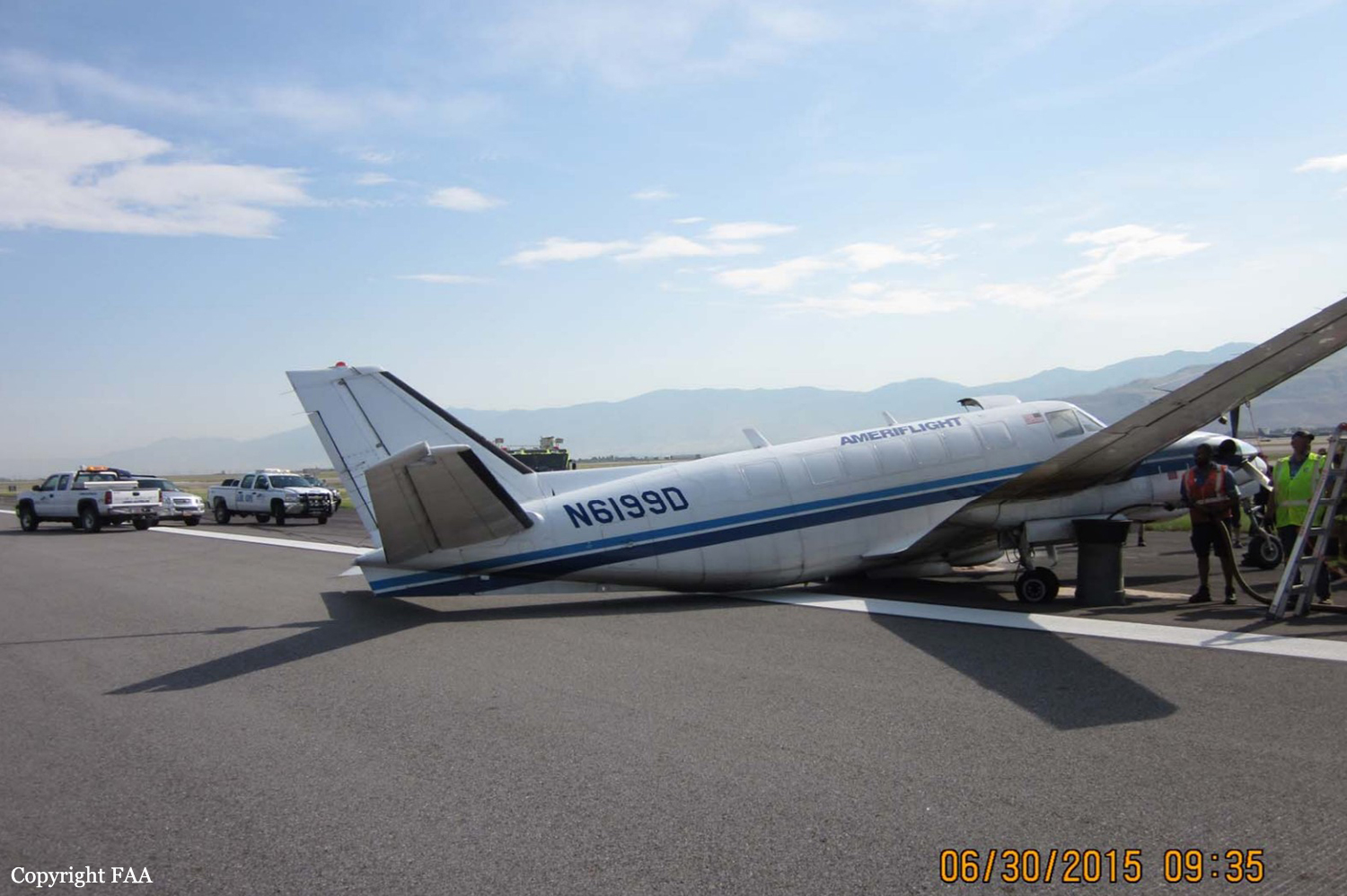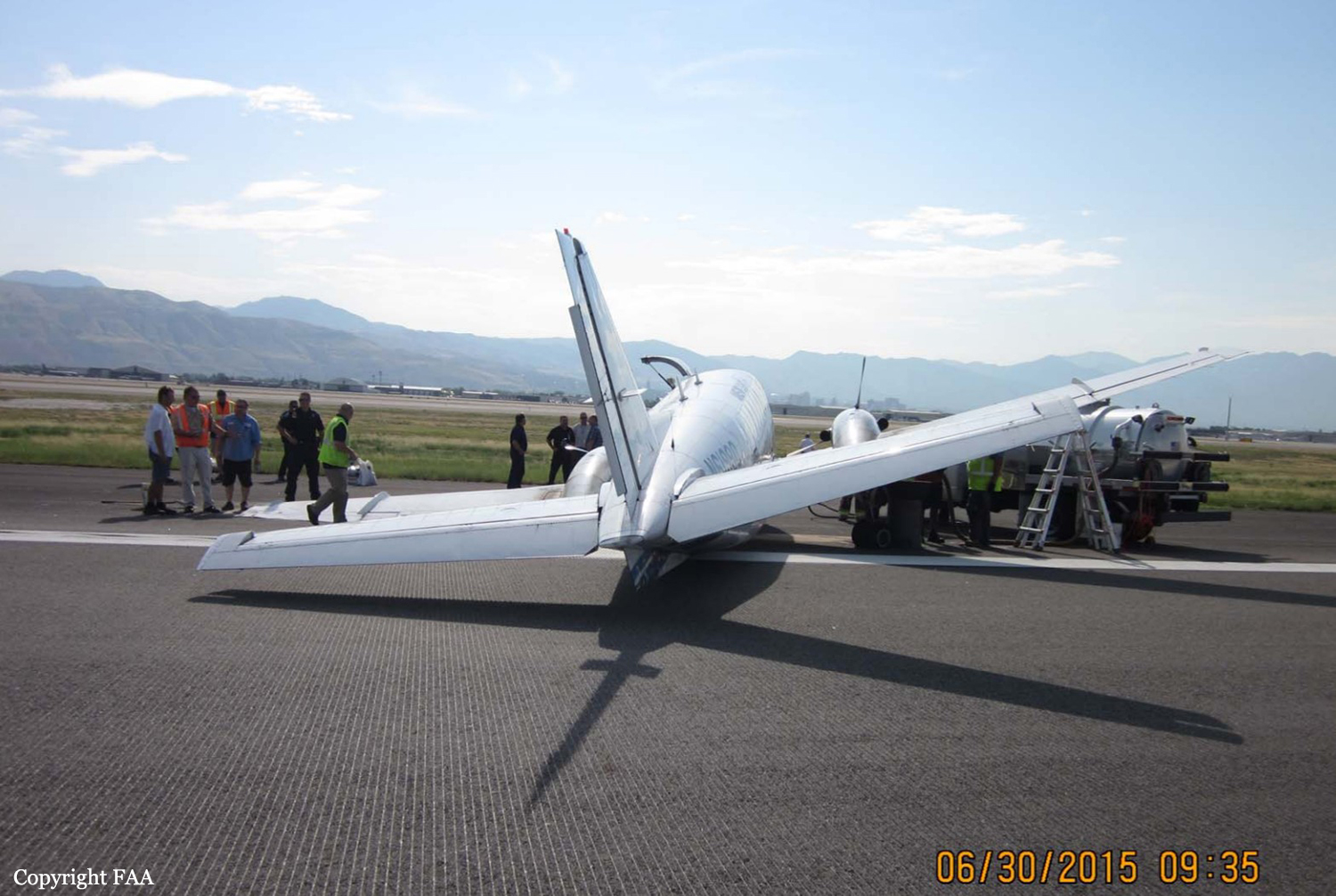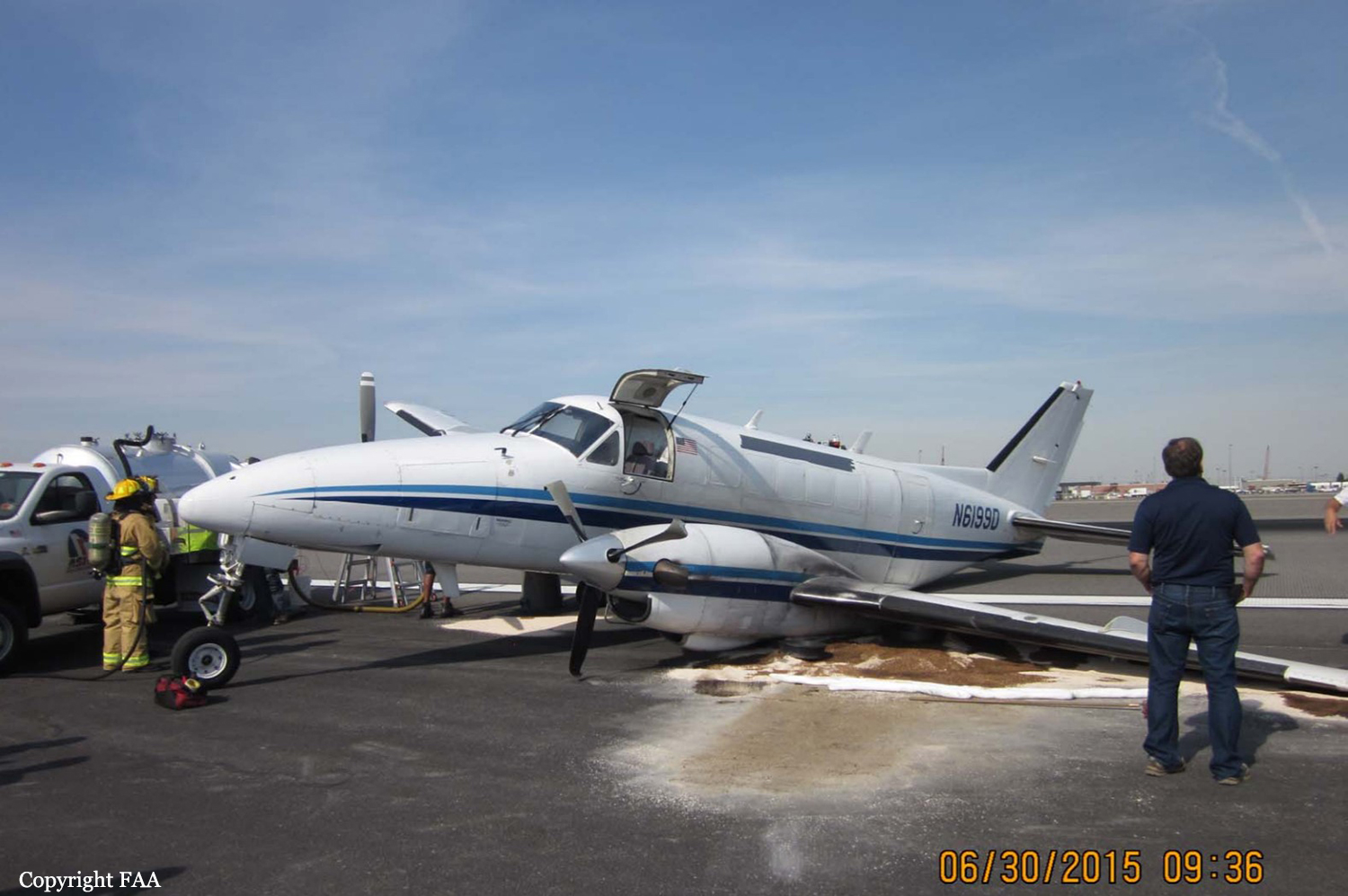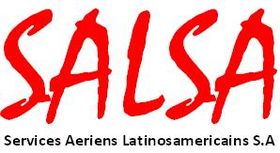Country
Crash of a Beechcraft C99 Airliner in Salt Lake City
Date & Time:
Jun 30, 2015 at 0800 LT
Registration:
N6199D
Survivors:
Yes
Schedule:
Salt Lake City – Ely
MSN:
U-169
YOM:
1981
Crew on board:
2
Crew fatalities:
Pax on board:
0
Pax fatalities:
Other fatalities:
Total fatalities:
0
Captain / Total hours on type:
151.00
Copilot / Total hours on type:
718
Aircraft flight hours:
31957
Circumstances:
The commercial pilot and copilot reported that, after a normal start and taxi, the airplane was cleared for takeoff. The pilot reported that he began the takeoff roll and, once the airplane reached 100 knots, he rotated the airplane. He added that the airplane immediately experienced an uncommanded right yaw and that the right rudder pedal was "at the floor." Both pilots applied pressure to the left rudder pedal; however, the pedal barely moved. The pilot then tried to manipulate the rudder trim; however, the airplane continued to yaw right. He then manipulated the throttle controls and landed the airplane on the left side of the runway. The airplane remained difficult to control, and subsequently, the left landing gear collapsed, and the airplane slid to a stop on its left side. Postaccident examination of the cockpit revealed that the rudder trim was fully trimmed to the nose right position. Examination of the rudder and rudder trim assembly revealed no anomalies that would have precluded normal operation. The reason for the unmanageable right yaw could not be determined.
Probable cause:
The airplane's unmanageable right yaw during takeoff for reasons that could not be determined because postaccident examination of the rudder and rudder assembly did not reveal any anomalies that would have precluded normal operation.
Final Report:



Crash of a Beechcraft 99A Airliner in Milot: 3 killed
Date & Time:
Sep 20, 2011 at 1630 LT
Registration:
HH-APA
Survivors:
No
Schedule:
Port-au-Prince – Cap-Haïtien
MSN:
U-123
YOM:
1969
Flight number:
SO112
Crew on board:
2
Crew fatalities:
Pax on board:
1
Pax fatalities:
Other fatalities:
Total fatalities:
3
Circumstances:
While descending to Cap-Haïtien Airport, the crew encountered poor weather conditions with heavy rain falls. On approach, the twin engine aircraft crashed in a field located near Milot, about 12 km south of the airport. All three occupants were killed. Both pilots were citizens from Dominica and Mexico while the passenger was a Vietnamese citizen working for a local telecommunication company.

Crash of a Beechcraft 99 Airliner in Évora: 2 killed
Date & Time:
Aug 14, 2009 at 1908 LT
Registration:
F-BTME
Survivors:
No
Schedule:
Évora - Évora
MSN:
U-79
YOM:
1968
Crew on board:
1
Crew fatalities:
Pax on board:
1
Pax fatalities:
Other fatalities:
Total fatalities:
2
Aircraft flight hours:
22993
Aircraft flight cycles:
17449
Circumstances:
The aircraft, a Beechcraft model BE-99, s/n U79, with French registration F-BTME, belonging to the operator “Avioarte Serviços Aéreos, Lda”, was involved all that day, 14th of August, 2009, flying locally, carrying parachutists for skydiving exercises, in the vicinity of Évora aerodrome (LPEV), working for the enterprise “Skydive”. With twelve full equipped parachutists and one pilot on board, the aircraft took-off on runway 01 at 18:47, intending to climb to an altitude of 13000ft (4000m), at which altitude the jumping would take place. When passing about 9500ft (2900m), left engine (#1) flame-out and respective propeller was automatically feathered. The pilot stop climb at around 10500ft (3200m), informed the parachutists that one engine had stopped and they should jump a little lower than it was expected, while he would proceed for landing at same aerodrome, with one engine inoperative. All parachutists left the aircraft, on sequence, but one, who, after being next to the exit, returned to the cockpit and remained on board, with the pilot. The aircraft started a dive, turning around the field, and the pilot contacted the tower on left base leg for runway 01, but said nothing about the inoperative engine or any assistance required. He was told to report on final, which he never did. He continued the approach for runway 01, with landing gear down and flaps at initial setting (13º), but keeping high speed. The aircraft made a low pass, over all runway length, without the wheels touching the ground. Once passing runway end it continued flying, the pilot increased power on right engine (#2) and the aircraft started deviating to the left, with wings levelled and without showing significant climb tendency. Observers, at the aerodrome, lost the sight of the aircraft for some moments and saw it reappearing close to Almeirim residential quarter (in the outskirts of Évora). One testimony, sited at the aerodrome, referred seeing the aircraft executing a sudden manoeuvre, like a left roll, pointing the wheels up to the sky. Moments later a collision sound was heard, the engine became silent and some flames and a black smoke cloud appeared. The aircraft collided with a residential building, in Maria Auxiliadora street, Almeirim residential quarter, sited about 1160m far from runway end, on track 330º. After the collision with the building, the aircraft fell to the ground, upside-down, a fire sparked immediately and the plane was engulfed by flames. Fire brigades from Évora, Viana do Alentejo, Montemor-o-Novo and Arraiolos arrived at the scene, promptly, but it took some time for the fire to be extinguished (after burning all aircraft fuel) and the burned bodies recovered from the wreckage.
Probable cause:
Primary Cause:
Primary cause for this accident was pilot inability, as he was not qualified to fly this class of aircraft, to carry a single engine landing or maintain directional control during go-around with one engine inoperative.
Contributory Factors:
The following were considered as Contributory factors:
- The pilot was not qualified to operate multi-engine aircrafts and had no knowledge and training to fly this kind of aircraft;
- Unsuitable fuel monitoring and omission on manufacturer recommended procedures accomplishment;
- Inadequate flying technique, without consideration to the airplane special flying characteristics;
- Inadequate supervision, by the competent authorities, on flying activities carried by pilots and aircrafts with foreign licenses and registrations, inside Portuguese territory.
Primary cause for this accident was pilot inability, as he was not qualified to fly this class of aircraft, to carry a single engine landing or maintain directional control during go-around with one engine inoperative.
Contributory Factors:
The following were considered as Contributory factors:
- The pilot was not qualified to operate multi-engine aircrafts and had no knowledge and training to fly this kind of aircraft;
- Unsuitable fuel monitoring and omission on manufacturer recommended procedures accomplishment;
- Inadequate flying technique, without consideration to the airplane special flying characteristics;
- Inadequate supervision, by the competent authorities, on flying activities carried by pilots and aircrafts with foreign licenses and registrations, inside Portuguese territory.
Final Report:



Crash of a Beechcraft 99A Airliner in Puerto Montt: 9 killed
Date & Time:
Jul 10, 2008 at 1025 LT
Registration:
CC-CFM
Survivors:
No
Schedule:
Puerto Montt - Melinka
MSN:
U-145
YOM:
1971
Crew on board:
1
Crew fatalities:
Pax on board:
8
Pax fatalities:
Other fatalities:
Total fatalities:
9
Captain / Total hours on type:
563.00
Circumstances:
Shortly after take off, while in initial climb, the pilot declared an emergency after the left engine cowling accidentally opened. He decided to return for an emergency landing and completed a turn. While on final, the pilot elected to maintain 200 feet but the aircraft stalled and crashed 1,500 metres short of runway 01. The aircraft was totally destroyed and all nine occupants were killed.
Probable cause:
Operational error of the pilot in command by not applying normal approach procedures recommended by the manufacturer and loss control of the aircraft (stall) while returning to land with the left engine cowling open.
The following contributing factors were identified:
- During the preflight inspection, the pilot failed to detect that the left engine cowling was unlatched,
- Return with the intention of landing with a speed very close to the stall speed, possibly to avoid the detachment of the engine cowling due to the wind force,
- Probable increased stall speed by altering the left wing aerodynamics due to the engine open cowl,
- Not having high enough altitude to recover from a stall condition,
- Possible decreased physiological capabilities of the commander of the aircraft, due to the presence of alcohol in his system,
- Possible pilot distraction due to weather conditions and the opening of the engine cowling.
The following contributing factors were identified:
- During the preflight inspection, the pilot failed to detect that the left engine cowling was unlatched,
- Return with the intention of landing with a speed very close to the stall speed, possibly to avoid the detachment of the engine cowling due to the wind force,
- Probable increased stall speed by altering the left wing aerodynamics due to the engine open cowl,
- Not having high enough altitude to recover from a stall condition,
- Possible decreased physiological capabilities of the commander of the aircraft, due to the presence of alcohol in his system,
- Possible pilot distraction due to weather conditions and the opening of the engine cowling.
Final Report:
Ground accident of a Beechcraft 99A Airliner in Milwaukee
Date & Time:
Jan 24, 2007 at 2000 LT
Registration:
N699CZ
Survivors:
Yes
Schedule:
Stevens Point – Milwaukee
MSN:
U-133
YOM:
1969
Flight number:
FRG1509
Crew on board:
1
Crew fatalities:
Pax on board:
0
Pax fatalities:
Other fatalities:
Total fatalities:
0
Captain / Total hours on type:
2400.00
Aircraft flight hours:
35447
Circumstances:
A Beech 99 and a Cessna 402 were substantially damaged in a ground collision that occurred during night taxi operations at General Mitchell International Airport (MKE), Milwaukee, Wisconsin. Both pilots followed each of the controller's instructions to proceed to the same cargo ramp using intersecting taxiways after having landed. Neither controller had advised either pilot that other aircraft would be approaching the same taxiway intersection. Neither pilot reported seeing the other airplane approaching the taxiway intersection. The Cessna 402 landed on runway 25R and was instructed to taxi to the cargo ramp via Golf, Bravo, and Alpha taxiways. The Beech 99 landed on runway 25L. The taxi instructions given to the Beech 99 pilot were to turn right at taxiway A2 (high-speed taxiway), monitor ground on frequency 121.8, and taxi to the cargo ramp. The local controller reported he scanned taxiway A, the runway, and saw the Beech 99 clear of the runway. As the Beech 99 prepared to turn off taxiway A2 onto taxiway A, the Cessna 402 approached the taxiway A and taxiway A2 intersection. The Beech 99's right propeller impacted the Cessna 402's left wing tip fuel tank. The impact of the two airplanes resulted in a fire. Both of the pilots involved in the ground collision evacuated their respective airplanes. The FAA Order 7110.65, "Air Traffic Control," states that the absence of holding instructions authorizes an aircraft to cross all taxiways and runways that intersect the taxi route. FAA Order 7110.65, "Air Traffic Control," states that it is the procedure for controllers to instruct aircraft where to turn off the runway after landing and advise the aircraft to hold short of a runway or taxiway if required for traffic. Neither aircraft was issued hold short instructions. The Airport Surface Detection Equipment Model X (ASDEX), provided images of each airplane's movement leading up to the time of the ground collision. The ASDE-X replay showed the Beech 99 taxiing at 20 knots on taxiway A2 approaching the taxiway A intersection. The Cessna 402 was shown taxiing at 20 knots just short of the taxiway A and taxiway A2 intersection. Both pilots reported that they did not see the other airplane approaching the same intersection while taxiing. Title 14 Code of Federal Regulations Part 91 states that vigilance shall be maintained by each person operating an aircraft so as to "see and avoid" other aircraft.
Probable cause:
The failure of both pilots to adequately scan for and avoid other aircraft traffic during taxi operations, and the failure of Air Traffic Control to issue a traffic advisory to both of the pilots. A contributing factor to the accident was the night time light conditions.
Final Report:




